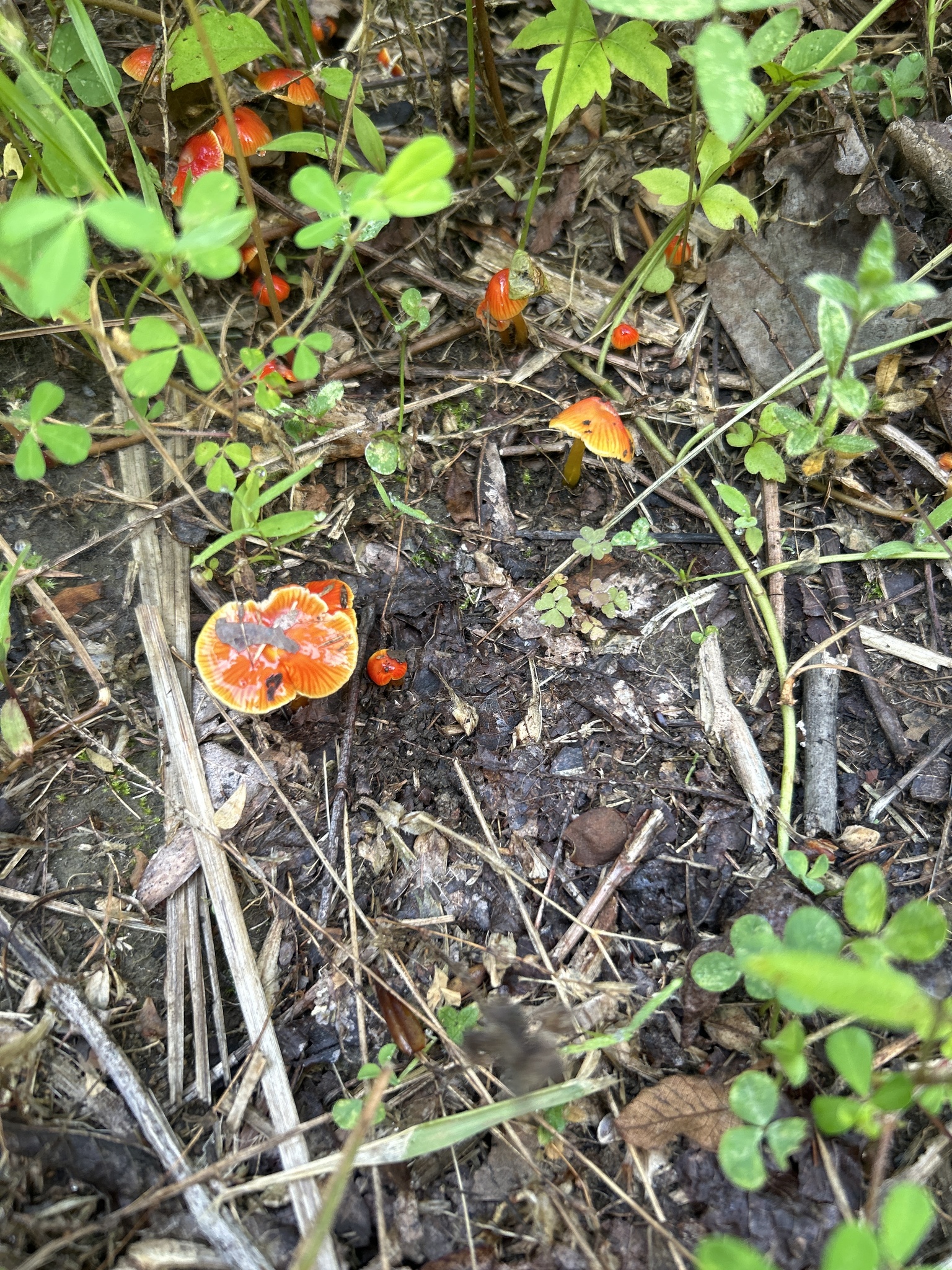Map Snapshot


1 Record
Seasonality Snapshot
Source: Wikipedia
| Hygrocybe coccinea | |
|---|---|

| |
| Scientific classification | |
| Domain: | Eukaryota |
| Kingdom: | Fungi |
| Division: | Basidiomycota |
| Class: | Agaricomycetes |
| Order: | Agaricales |
| Family: | Hygrophoraceae |
| Genus: | Hygrocybe |
| Species: | H. coccinea
|
| Binomial name | |
| Hygrocybe coccinea | |
| Hygrocybe coccinea | |
|---|---|
| Gills on hymenium | |
| Cap is convex | |
| Hymenium is adnate | |
| Stipe is bare | |
| Spore print is white | |
| Ecology is mycorrhizal | |
| Edibility is edible but not recommended | |
Hygrocybe coccinea, sometimes called the scarlet hood, scarlet waxcap or righteous red waxy cap, is a colourful member of the mushroom genus Hygrocybe. These waxcaps are found across the Northern Hemisphere from China and Japan to Europe and North America. The small bright red mushroom is a familiar sight in unimproved grasslands in Europe in late summer and autumn, and woodlands in North America in winter.
Taxonomy
[edit]The scarlet hood was first described as Agaricus coccineus by German mycologist Jacob Christian Schäffer in 1774, before being transferred to the genus Hygrophorus by Elias Magnus Fries in 1838, and finally Hygrocybe by Paul Kummer in 1871. The specific epithet coccinea is Latin for "scarlet".
Description
[edit]A small waxcap with an initially bell-shaped, and later flattening, cap 2–5 centimetres (3⁄4–2 in) across, scarlet in colour and slimy in texture. The adnate gills are thick and widely spaced, yellow red in colour. The ringless stipe is 2–5 cm tall and 0.3–1 cm (1⁄8–3⁄8 in) wide, red with a yellowish base. The flesh is yellowish-red and the smell and taste faint. The oval spores measure 7–9.5 x 4–5 μm and produce a white spore print.[1][2]
Distribution and habitat
[edit]Hygrocybe coccinea has a wide distribution in unimproved grasslands across Europe from August to October.[1] In Britain, like all Hygrocybes, it has its best seasons in frost-free late autumn months, and in western North America it may be found under redwoods or in mixed woodland in winter.[3] It has been recorded growing under Rhododendron and oak (Quercus) in Sagarmatha National Park in Nepal, and also occurs in India, China and Japan.[4]
Specimens initially identified as H. coccinea in Australia have been reclassified as H. miniata or H. kandora.[5]
Edibility
[edit]The species is edible,[2] possibly even when raw,[6] but is of fairly little interest.[7]
See also
[edit]References
[edit]- ^ a b Nilson S & Persson O (1977). Fungi of Northern Europe 2: Gill-Fungi. Penguin. p. 22. ISBN 978-0-14-063006-0.
- ^ a b Phillips, Roger (2006). Mushrooms. London: Pan MacMillan. p. 75. ISBN 978-0-330-44237-4.
- ^ Arora, David (1986). Mushrooms demystified: a comprehensive guide to the fleshy fungi (2nd ed.). Berkeley: Ten Speed Press. pp. 114. ISBN 978-0-89815-169-5.
- ^ Giri A, Rana P (June 2007). "Some Higher Fungi from Sagarmatha National Park (SNP) and its adjoining areas, Nepal". Scientific World. 5 (5): 67–74. doi:10.3126/sw.v5i5.2659.
- ^ Young, A.M. (2005). Fungi of Australia: Hygrophoraceae. (Australian Biological Resources Study) CSIRO, Canberra, ACT. p. 148. ISBN 978-0-643-09195-5.
- ^ Francis-Baker, Tiffany (2021). Concise Foraging Guide. The Wildlife Trusts. London: Bloomsbury. p. 130. ISBN 978-1-4729-8474-6.
- ^ Miller Jr., Orson K.; Miller, Hope H. (2006). North American Mushrooms: A Field Guide to Edible and Inedible Fungi. Guilford, CN: FalconGuide. p. 63. ISBN 978-0-7627-3109-1.
